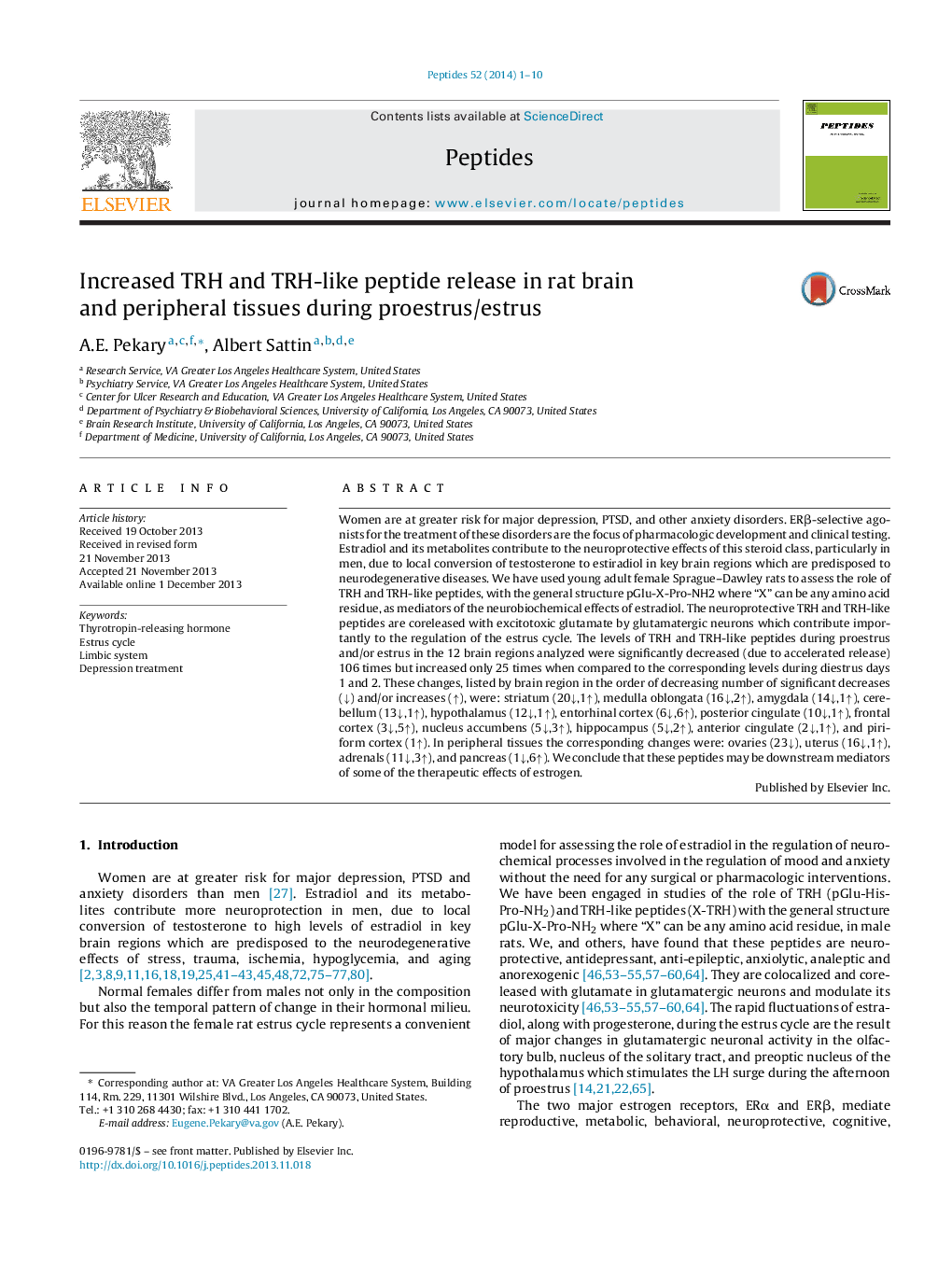| Article ID | Journal | Published Year | Pages | File Type |
|---|---|---|---|---|
| 2006028 | Peptides | 2014 | 10 Pages |
•TRH and TRH-like peptide levels in rat brain and peripheral tissues decline during protestrus/estrus.•This is due to their accelerated release from glutamatergic neurons involved in regulating the estrous cycle.•Increased copper uptake and ascorbate synthesis during estrus facilitates α-amidation of TRH-like progenitor peptides.
Women are at greater risk for major depression, PTSD, and other anxiety disorders. ERβ-selective agonists for the treatment of these disorders are the focus of pharmacologic development and clinical testing. Estradiol and its metabolites contribute to the neuroprotective effects of this steroid class, particularly in men, due to local conversion of testosterone to estiradiol in key brain regions which are predisposed to neurodegenerative diseases. We have used young adult female Sprague–Dawley rats to assess the role of TRH and TRH-like peptides, with the general structure pGlu-X-Pro-NH2 where “X” can be any amino acid residue, as mediators of the neurobiochemical effects of estradiol. The neuroprotective TRH and TRH-like peptides are coreleased with excitotoxic glutamate by glutamatergic neurons which contribute importantly to the regulation of the estrus cycle. The levels of TRH and TRH-like peptides during proestrus and/or estrus in the 12 brain regions analyzed were significantly decreased (due to accelerated release) 106 times but increased only 25 times when compared to the corresponding levels during diestrus days 1 and 2. These changes, listed by brain region in the order of decreasing number of significant decreases (↓) and/or increases (↑), were: striatum (20↓,1↑), medulla oblongata (16↓,2↑), amygdala (14↓,1↑), cerebellum (13↓,1↑), hypothalamus (12↓,1↑), entorhinal cortex (6↓,6↑), posterior cingulate (10↓,1↑), frontal cortex (3↓,5↑), nucleus accumbens (5↓,3↑), hippocampus (5↓,2↑), anterior cingulate (2↓,1↑), and piriform cortex (1↑). In peripheral tissues the corresponding changes were: ovaries (23↓), uterus (16↓,1↑), adrenals (11↓,3↑), and pancreas (1↓,6↑). We conclude that these peptides may be downstream mediators of some of the therapeutic effects of estrogen.
